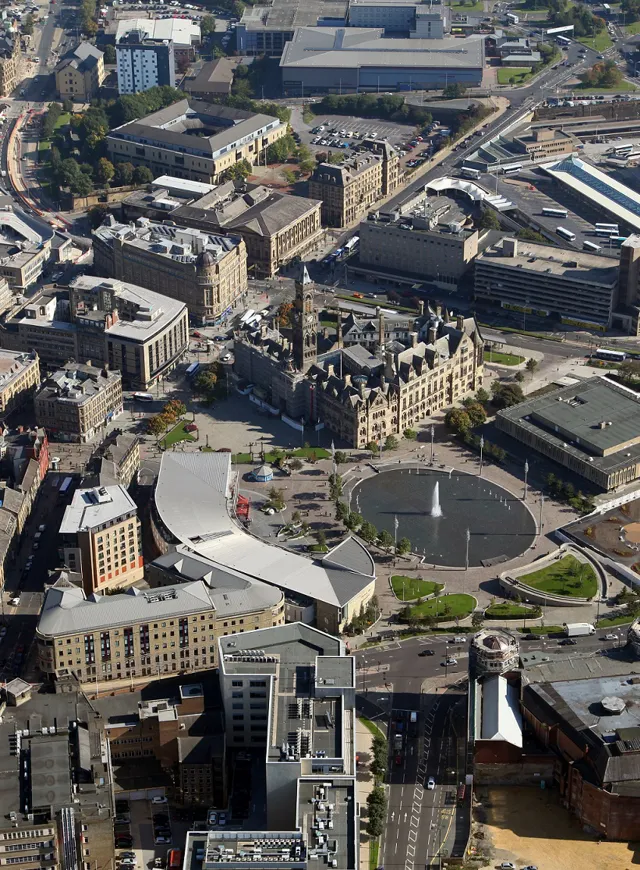
Feasibility study to support Bradford Clean Air Zone
Case study - Feasibility study to support Bradford Clean Air Zone
Ricardo supports the City of Bradford Metropolitan District Council to secure £43 million in Government funding to deliver a range of nitrogen dioxide reduction measures aimed at improving public health.
"We were particularly impressed with the way Ricardo’s specialists worked with our staff as part of one team to complete this project, the timescales for which were very challenging." Sally Jones, Monitoring and Evaluation Manager, City of Bradford Metropolitan District Council
Challenge
The City of Bradford Metropolitan District Council was directed by the UK Government to carry out a Clean Air Zone (CAZ) feasibility study with the aim of reducing air pollution in the city.
Ricardo’s multidisciplinary team – which has extensive CAZ expertise, including air quality modelling, scenario development and cost analysis studies – was contracted by the Council to:
- Conduct the feasibility study.
- Conduct scenario modelling of mitigation measures that were focused around a charging CAZ
- Assess the air quality impacts of the measures.
- Assess the implementation costs and benefits of the measures.
Ricardo’s pioneering RapidAir model underpinned the detailed and efficient feasibility testing of measures. RapidAir’s market-leading speed and accuracy supports high spatial resolution concentration (1 metre for Bradford) and emissions estimates over large spatial domains in short run times. This enables data to be modelled in minutes as opposed to several hours taken with other modelling tools.
The detail available from RapidAir’s outputs lends itself to assessing mitigation measures, including determining unintended consequences (for example, displacement impacts that can occur when, through planned interventions, road traffic is diverted). Model results are readily accessible, which supports public dissemination.
Approach
Our work involved producing a RapidAir model for a base year and verifying the model results against air pollution measurement data collected by the Council. While the main pollution source targeted was road traffic, Ricardo also modelled other key sources of pollution such as rail, domestic combustion and industrial point sources in the study area. These were incorporated into pollution background maps. Once a verified base year model was developed, future year baseline models were produced to project pollution levels.
The extensive expertise and technical knowledge of Ricardo’s specialists in the development of air pollution mitigation measures, in particular in relation to CAZs and low emission vehicle technology, were critical in helping the Council to develop scenarios containing mitigation measures that were applicable to Bradford. In identifying pollution sources to target, results of the baseline RapidAir model were used to attribute pollution to key sources (for example, vehicle types – including cars, vans and heavy goods vehicles). Once the key sources of pollution had been identified, measures targeting the source were developed. This ensured the Council’s process for deriving its preferred option for air pollution reduction was as robust as possible, and used representative and achievable assumptions, but used a minimal number of model iterations.
"Ricardo’s RapidAir model provided detailed information on air pollution levels in Bradford. The air pollution evidence, coupled with Ricardo’s economic assessment, equipped us with the high-quality evidence necessary to support our application for Government funding. We’re confident that the selected measures, when implemented, will be successful in reducing air pollution in the city and, in turn, improve public health." Sally Jones, Monitoring and Evaluation Manager, City of Bradford Metropolitan District Council
Ricardo modelled the scenarios developed using RapidAir to produce concentration maps of nitrogen dioxide and particulate matter at 1 metre resolution across the city. The scenario with the largest improvement in air quality was determined from these pollution maps.
The pollution maps were also used to raise public awareness of air quality. The Council is using the outputs from RapidAir to develop an online tool to allow the public to check pollution levels in their postcode.
To assist the Council in gaining the necessary funding to implement the preferred measures, Ricardo provided evidence that demonstrated the value for money of the preferred option and showed it optimised public value. Ricardo performed cost-benefit analysis (CBA) and distributional analysis (DA) to support the development of the economic case1. The CBA addressed the overall potential benefits (for example, environmental, congestion and health) and costs (for example, road charges, implementation costs, capital costs of replacement vehicles and welfare costs) of CAZ options. The DA identified trends in the impacts of policy options not highlighted in the CBA to determine if any demographic groups were disproportionally affected.
Results
The extensive knowledge of Ricardo’s experts enabled the City of Bradford Metropolitan District Council to develop a package of mitigation measures and secure £43 million in Government funding to deliver these measures as part of its CAZ commitment. The CAZ is expected to reduce pollutant concentrations in the city to below legislative levels and improve public health 5 years earlier than would be the case without CAZ implementation.
To find out more about Ricardo's RapidAir dispersion model, visit www.rapidair.co.uk



